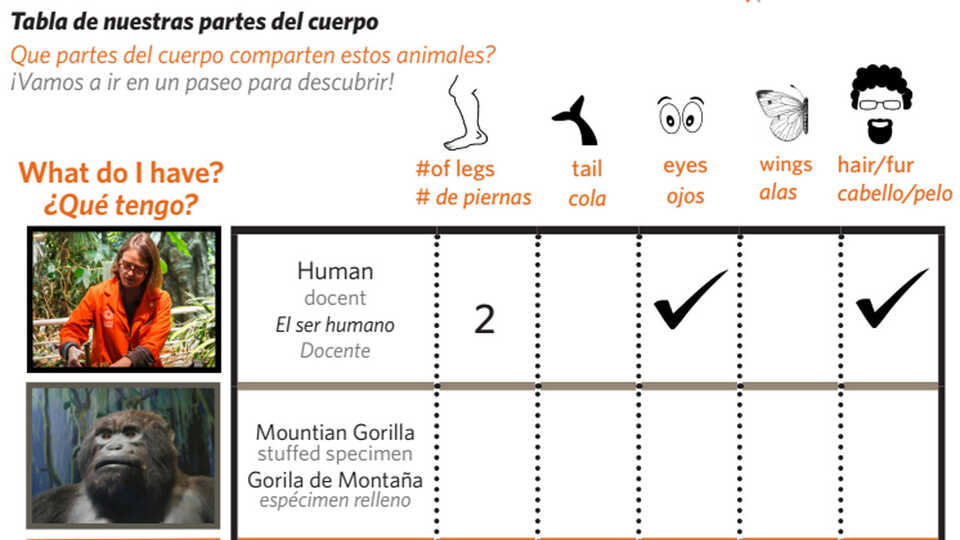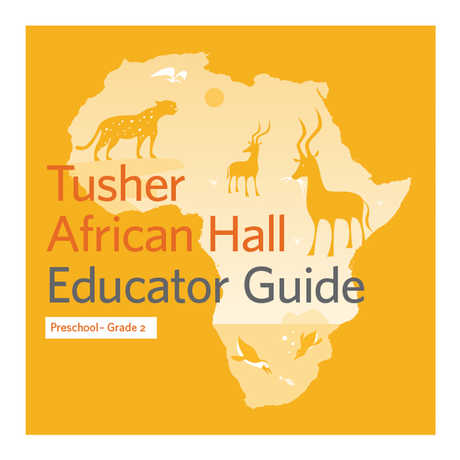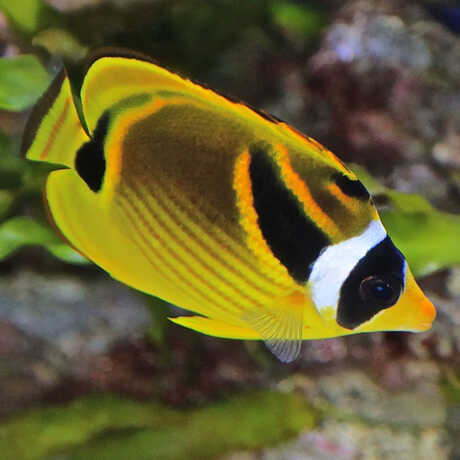
In this ready-made museum activity, chaperones will lead small groups of students on a walk around the museum in search of animals. Students will compare and contrast body parts while engaging in discussion, role-play, and imaginative games.
In this activity for the museum floor, students will:
- identify, compare, and contrast the major structures of animals
- observe and imitate movements and sounds
- clipboard (optional)
- pencil
- Our Body Parts Student Worksheet (one per group)
Teacher Tip: This activity is purposefully designed to be facilitated by the chaperone rather than student led. By having adults focus on reading, your students can better explore and make observations at the exhibits.
- Split the class into small groups based on the number of chaperones you have. Assign at least one chaperone to each group. Assign each group a different animal to begin with, if possible.
- Make copies of the scavenger hunt and instructions for each group.
- Go over the scavenger hunt with your adult chaperones ahead of time to make sure they are familiar with the activity.
- Explain to your students that the field trip will include a scavenger hunt throughout the museum floor. And by doing so, students will be exploring various animals (living and non-living) and making comparisons.
- Lead your students in a warm-up activity to get them comfortable comparing animals:
- As a group, make a list of about 10 different animals.
- Next, have students describe ways they could sort the animals into groups based on what they see (color, size, shape, number of legs, etc.).
- Using the same characters that the students grouped the animals based on, discuss why animals might have these differences (e.g. different colors to blend into different habitats, different limbs based on how the animal moves, etc.).
- Remind chaperones to use guiding questions rather than giving students the answers. Do not be afraid of silence, instead urge students to spend several seconds to think things over before answering. Encourage everyone to learn together and to answer each question.
- Designate a time and place to meet up. Allow at least 30 minutes for your scavenger hunt. This will allow for extra time to explore the museum after completing the activity.
- After you have explored the museum and all have completed (all or most of the activity) their scavenger hunts with their group, bring your students together as a whole group (either in the museum or in the classroom).
- Review the discussion questions from the bottom of the worksheet.
- Ask students to share anything interesting they learned from?
- Have students continue asking questions and making further observations and comparisons by continuing their exploration and curiosity in your classroom.
After your visit, encourage students to continue to observe animals they see in their everyday lives. Think about their bodies, what function their body parts serve, and how they are different or similar to other animals that live around them.
Science and Engineering Practices
- Analyzing and Interpreting Data: Use observations to describe patterns in the natural world in order to answer scientific questions
- Asking Questions and Defining Problems: Ask questions based on observations to find more information about the world.
Disciplinary Core Ideas
- LS1.A Structure and Function: All organisms have external parts. Different animals use their body parts in different ways to see, hear, grasp objects, protect themselves, move from place to place, and seek, find, and take in food, water and air. Plants also have different parts (roots, stems, leaves, flowers, fruits) that help them survive and grow.
Crosscutting Concepts
- Patterns: Patterns in the natural world and human designed world can be observed and used as evidence
- Structure and Functions: The shape and stability of structures in nature are related to their function(s).
Performance Expectations:
Remember, performance expectations are not a set of instructional or assessment tasks. They are statements of what students should be able to do after instruction. This activity is just one of many that could help prepare your students to perform the following hypothetical tasks that demonstrate their understanding:
K-LS1-1 Use observations to describe patterns of what plants and animals (including humans) need.


